I’ll admit it. Broad Channel, other than damage caused by Hurricane Sandy in 2012, or a couple of businesses closing here and there, is the pretty much the same Broad Channel I saw during my first visit for Forgotten New York in 1999, and again in 2007. It’s Queens’ island kingdom, much as City Island is the Bronx’ island kingdom, and Coney Island used to be Brooklyn’s island kingdom before Coney Island Creek and Sheepshead Bay were severed by landfill. But every so often, I’m drawn there if only to see if anything has changed. But it changes little and that’s the way its residents prefer it. I was here to photograph a presentation for my partners the Greater Astoria Historical Society, but here I’ll be able to show a few mor scenes that I discovered.
Giving the usual historical background: Broad Channel (Island) is the only permanently inhabited island in Jamaica Bay, located between Howard Beach in Queens (Long Island) and the Rockaway peninsula. The small town on the island was largely built by the Broad Channel Corporation, which in the 1910s filled in marshes and rented parcels of land for $116 per year for anyone building a summer home in the area, which first gained attention when the New York, Woodhaven and Rockaway Railroad bridged Jamaica Bay in the 1880s. For many years, Broad Channel and three other stops along the NY,W&RR were summer havens for fishermen. By the 1910s, however, Jamaica Bay began to be too polluted for any recreational or commercial fishing to be feasible.
The Roaring Twenties brought Prohibition and concurrent rum-running on the isolated island, which had no vehicular connection to the rest of New York City until Cross Bay Boulevard was built in 1925. The boulevard is connected to Howard Beach by the Joseph P. Addabbo Bridge and to the Rockaway Peninsula by the Cross Bay Veterans Memorial Bridge. The Marine Parkway Bridge, later renamed the Gil Hodges Memorial Bridge for the Brooklyn Dodger first baseman and New York Met manager who lived in Marine Park, bridged the bay beginning in 1937.
When the Broad Channel Corporation went bankrupt in 1939, the City took title to all homes on the island; residents did not truly own their own homes until around 1980, when “tenants” finally purchased the land from the City. Broad Channel did not have sewers until 1988.
I arrived in Broad Channel on a February Sunday in 2016 where I met an associate for over 30 years, Vinny L. who has endured my presence on these FNY voyages of discovery for 17 years. On this occasion I took the Q53 express bus from the LIRR in Woodside, which deposits you in BC in about 30-40 minutes. The usual method of approach for me has been the A train from Penn Station, but weekend service is now spotty and a trip to BC can be made in about an hour. The bus is a lot faster if you live in Queens and want to connect from the #7 train or LIRR.
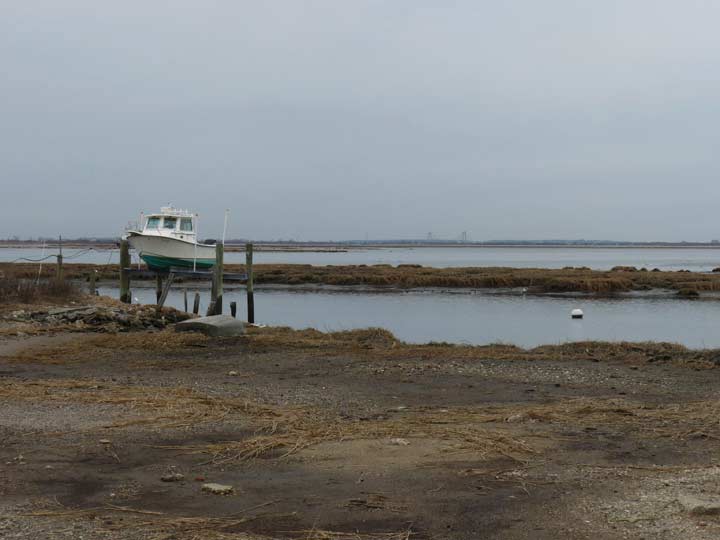
The weather was murky and mild, like much of the winter of 2016, but there was sufficient visibility for decent pictures; this is looking west from Cross Bay Boulevard and 8th Road. Looking across Jamaica Bay you can make out the Marine Parkway Bridge that connects Flatbush Avenue and Riis Park on the Rockaway peninsula.
Geographically, Broad Channel is laid out much like the Bronx’ island kingdom, City Island. There is a central spine (Cross Bay Boulevard) and ribs (numbered Roads with East counterparts east of Cross Bay Boulevard). Surrounding the subway station the island is sufficiently wide to support additional north-south streets, which bear actual names: Church, Walton, Lanark and West Roads. Noel Road runs east between East 7th and 8th Roads, and a Shad Creek Road runs a few blocks between Cross Bay Boulevard and 10th Road. And, there’s Channel Road which is a special case as you will see.
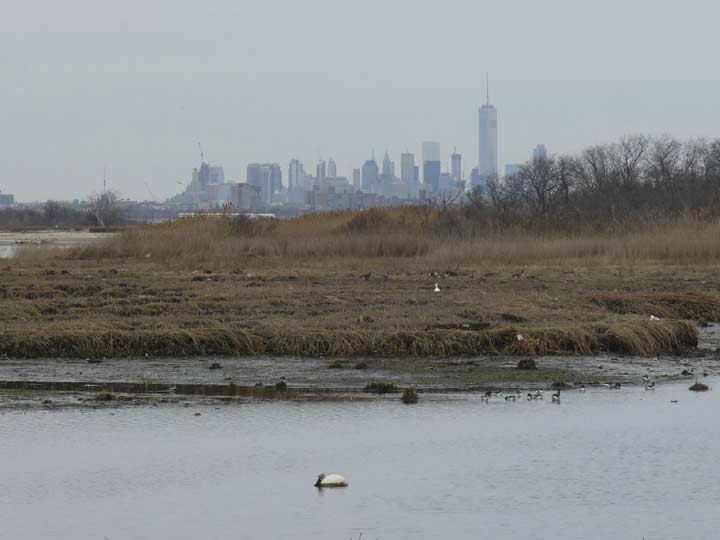
Turning my 18x zoom to the max to get this view of the Shining City from Cross Bay Boulevard and 6th Road. I read recently that a commercial digital camera with an 83X zoom went on the market last year [2015]. Anyone have experience with it? Let me know in Comments.
In the foreground is the Broad Channel Wetlands, a part of the Jamaica Bay Wildlife Refuge.
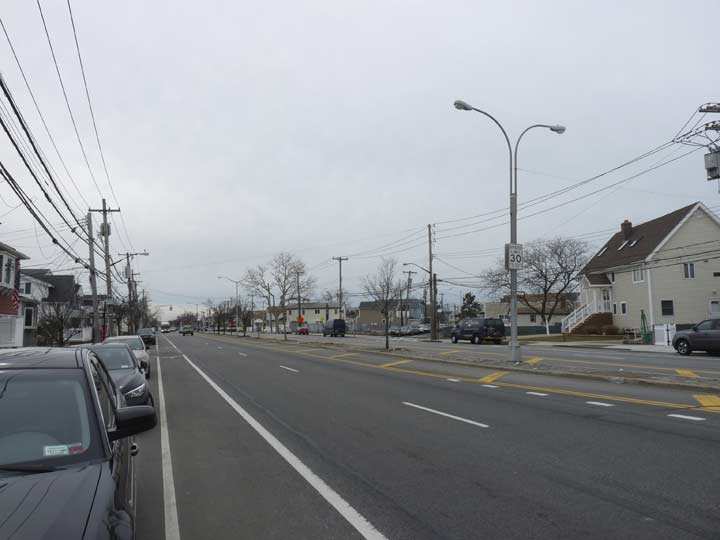
There was no vehicular connection from Broad Channel to the rest of New York City until Cross Bay Boulevard was built in 1925. The boulevard is connected to Howard Beach by the Joseph P. Addabbo Bridge and to the Rockaway Peninsula by the Cross Bay Veterans Memorial Bridge. The Marine Parkway Bridge, later renamed the Gil Hodges Memorial Bridge for the Brooklyn Dodger first baseman and New York Met manager who lived in Marine Park, bridged the bay beginning in 1937.
There’s very little commercial activity on Cross Bay Boulevard, which I found a bit odd. There’s a short commercial strip around 9th Road with the basics, but most island residents own automobiles and rive to Howard Beach for anything more than groceries or a slice of pizza. Much of the stretch is lined with private homes, many of them newly-aluminum sided post-Sandy.
Broad Channel’s only two churches, St. Virgilius Roman Catholic and Christ Presbyterian are only a half block away from each other on Noel Road and Church Road (the road is probably named for the Presbyterian church). The Catholic church and school are refreshingly modest buildings dating to 1924. The St. Virgilius convent, which appears similar to a regular residential building save for the presence of a cross above the front door, is a few blocks away at Noel and Lanark Roads. St. Virgilius merged with St. Camillus on the peninsula in 2008; when Christ Presbyterian was damaged by fire and storms, St. Virgilius welcomed its congregation.
The parish namesake was a medieval Irish churchman and astronomer; he maintained the earth was spherical centuries before it became common knowledge.
The Broad Channel Volunteer Fire Brigade was organized as bucket brigade to help minimize property loss due to fires. In 1907, this brigade was formally organized into the Broad Channel Volunteer Fire Association under its first Chief, Edward H. Schleuter. The current firehouse at 15 Noel Road, still in use, was opened in the summer of 1908.
At #204 East 6th Road near West Road is a bungalow with a wide yard and carport, home to either an enthusiastic ceramic collector or perhaps, manufacturer.


The Long Island Rail Road acquired the New York, Woodhaven and Rockaway Railroad in the early 1900s and ran trains across a succession of wooden bridges until 1950, but after a series of devastating fires the railroad sold the right-of-way to New York City, provided part of the island could be retained as parkland. A new metal bridge was built, and subway trains began crossing Jamaica bay and stopping in Broad Channel in 1956. Until 1975, passengers were compelled to pay an extra fare upon exiting from Broad Channel and the Rockaways, since the stations were so far away from everywhere else in the system.
Both the Broad Channel station and its powerhouse present a utilitarian face of the island community.
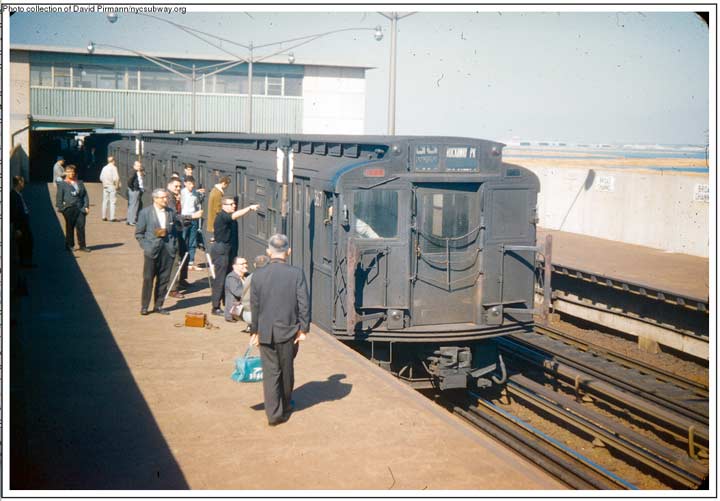
Here’s a look at the platform early on in operations that began in the summer of 1956. More photos from the Broad Channel station at NYC Subway.
A classic car collector lives ay West Road and East 9th Road and seversal of his masterpieces were parked near his home, including this General Motors “old look” bus, most of which rolled off the assembly line between 1940 and 1959 (when GM began producing the “fishbowls” that ruled city streets well into the 1980s). GM old looks dominated in NYC as well and some routes (some in Staten Island) continued with them well into the 1970s, along with similar models produced by Mack.
One of the Ford “F” series of pickup trucks and other commercial vehicles made between 1948 and 1952. The F-1 through F-3s were pickup trucks.
Willys Jeep Trucks were produced from 1947 to 1969. The company was founded by John Willys in 1912 after he purchased Overland Motors. Willys-Overland was a top manufacturer in the early days of the automotive industry. The brand survives today as Jeep, a vehicle first produced during World War II.
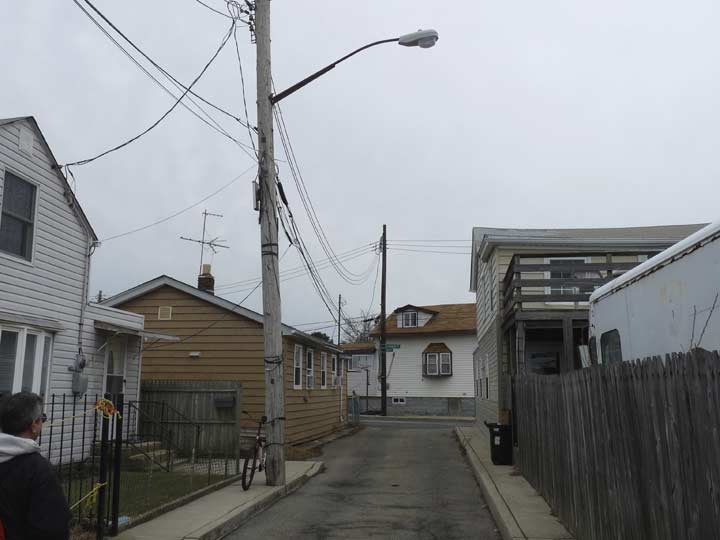
West 9th Rd. between Lanark and West Roads, to give you an indication of how narrow most of Broad Channel streets are.
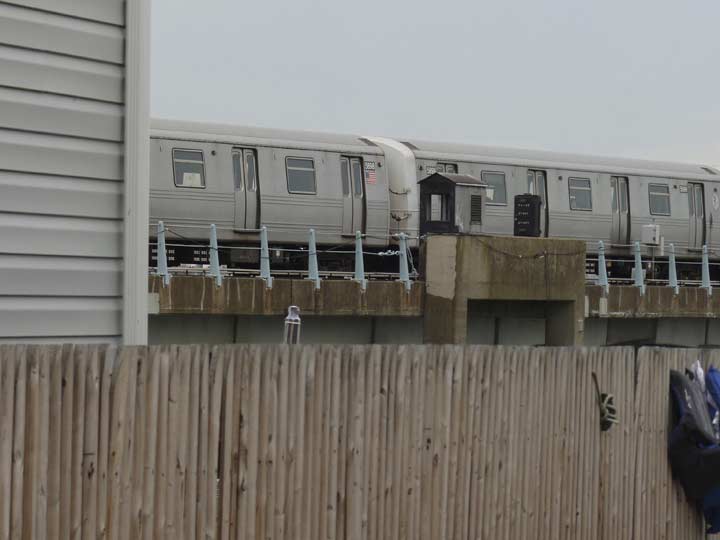
A Brooklyn-bound A train is about to arrive at Broad Channel.
Unmarked on most maps, Lanark Road extends south past East 9th Road to an arm of Jamaica Bay where some new-ish houses have been constructed. It’s a semiprivate area some of whose mailboxes are clustered at the junction of Lanark and East 9th.
Like the Rockaways, Broad Channel has its own street and house numbering system independent from the rest of Queens. There was once a plan to have Broad Channel join the overall numbering system, but that plan was scrapped. It would have meant avenues ending at 205th Avenue.
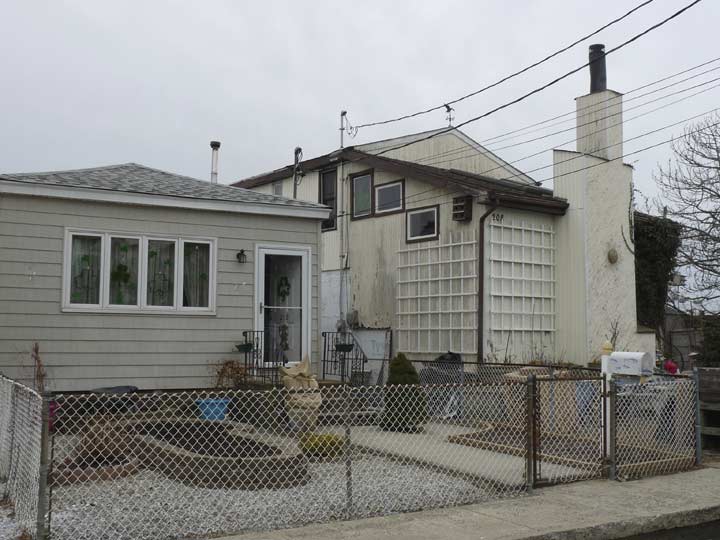
Along with some other houses on East 9th Road the backs of the houses seem to face the road. I did some research on this perplexing situation.
If you look at a 1949 Hagstrom showing Broad Channel, there was a tiny road running east to west accessed by Walton Road south of East 9th Road called Essex Court. Today, Walton Road still extends past East 9th a little, and there’s still a remnant of Essex Court there marked by a few nonfunctioning General Electric M-100 lamps. These were once found on NYC streets by the thousands on side streets, with dim whitish mercury vapor lamps and no diffuser bowls. In the 2010s the diffuser-less design has been revived with the takeover of Light Emitting Diode lamps, which also shine white light, though somewhat brighter.
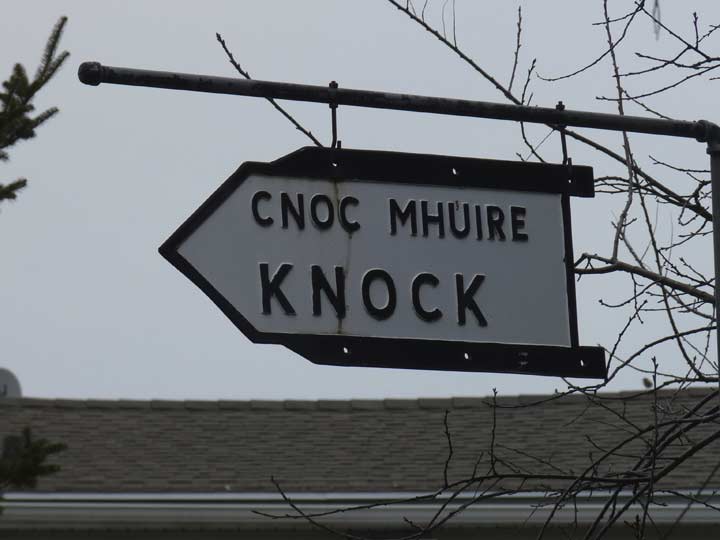
An Irish immigrant influence is still felt in Broad Channel and especially in Rockaway Park, the “Irish Riviera,” and in Breezy Point, said to have the largest concentrated Irish-American population anywhere in the city.
Irish language orthography has nothing to do with English. The name of this Irish town is approximately pronounced “croc widda” though some say “k’nok widda.” In English, it’s plain “nok.”
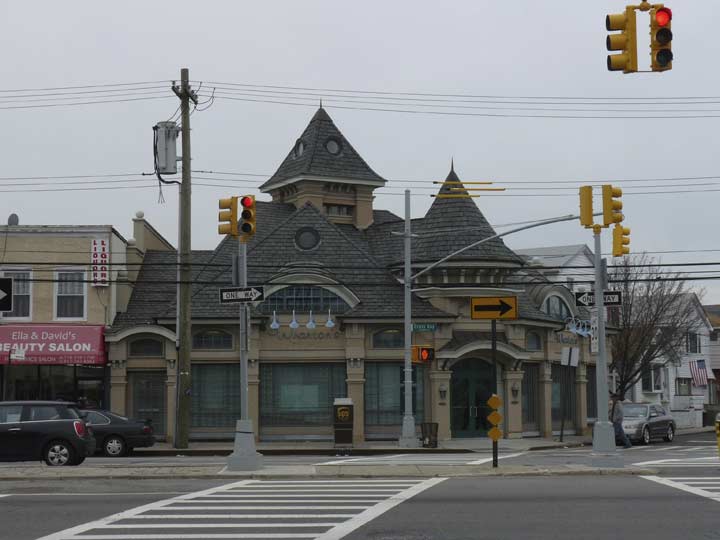
The former Wharton’s Apothecary, on Cross Bay Boulevard and West 9th Road, had been Broad Channel’s only drugstore. There are delis and pizzerias but many Broad Channelers drive to Howard Beach or the Rockaway peninsula for provisions, gasoline, clothing and other necessities.
The building is a decent facsimile of the detailed styles favored in the late 1800s, and received an award from the Queens Chamber of Commerce in 2006. The interiors also continue the period feel.
There is no Wharton, by the way; owner and builder Charles Howard, a Channeler, called it Wharton’s Apothecary because he noticed that names of many great American companies – Wal-Mart, Woolworth’s, Waldbaum’s – start with the outsize letter W.
Broad Channel’s brief business section, boasting two pizzerias on the same block. As mentioned, most Broad Channelers travel to Howard Beach for most necessities.
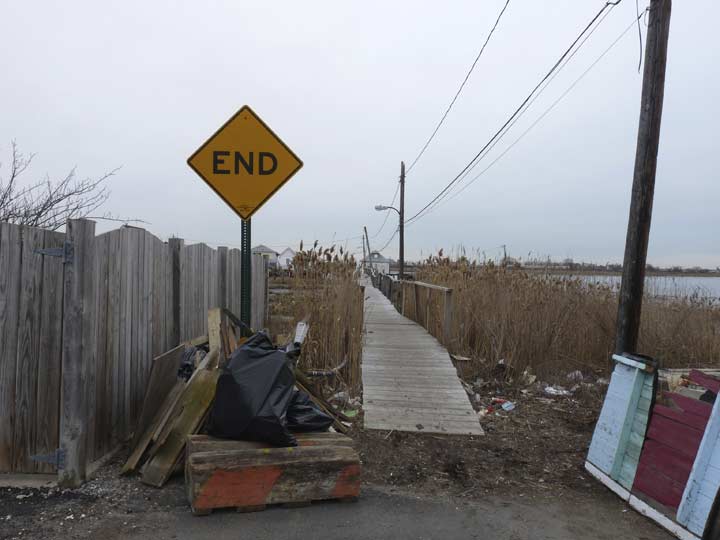
East 12th Road is where reality gives way to the Unknown and Unfathomed. A rickety boardwalk leads out over the marshes.
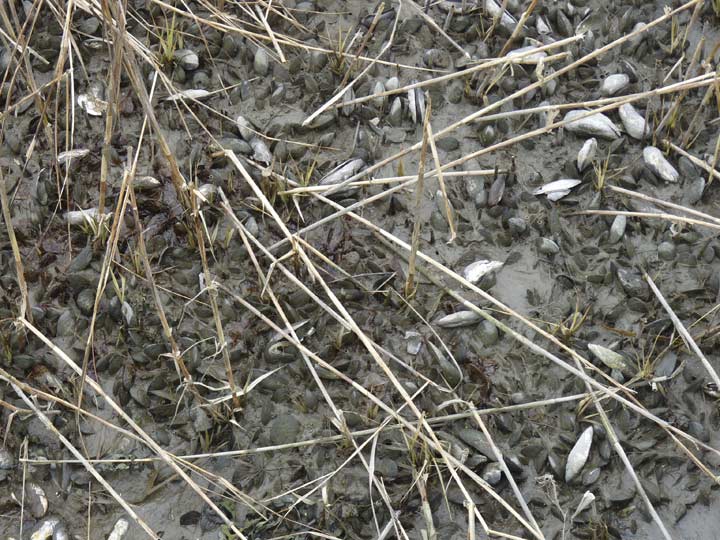
At low tide, a sticky, soggy, muddy mess appears under the almost-swaying structure, revealing the long-empty mussel shells that have been there for perhaps years.
A small sign admonishes the visitor to not attempt the splintered, creaking walkway that once accessed waterside docks serving the homes splayed out between the walkway and Jamaica Bay.
We did not linger long at this redoubt, as we suspected that whatever denizens that still lived here would remonstrate with us severely about what “keep out” means.
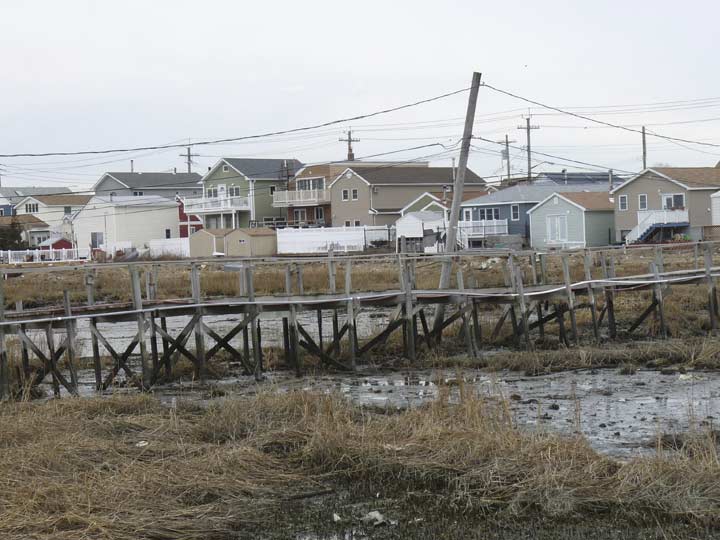
Sometimes, it is not wise to look back upon where one has been; Horror is the only realistic response. This bridge separated us from a demise in the murk and feed for shipworms.
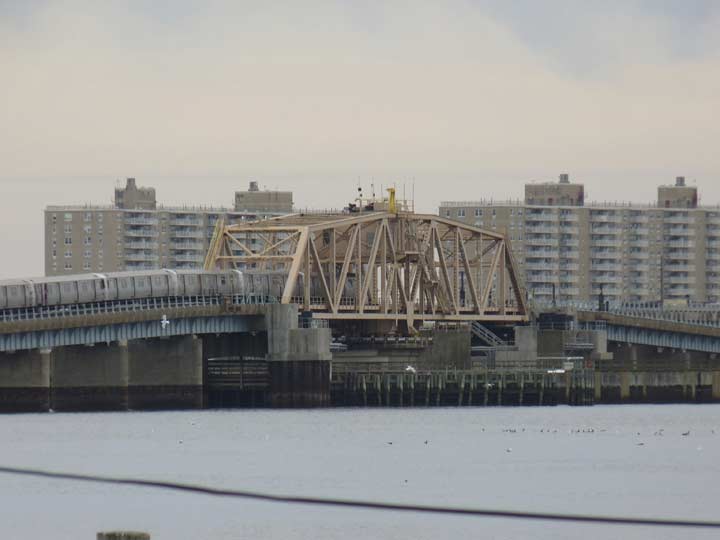
We (in NYC) don’t give names — or at least well-known ones — to bridges that carry rail traffic, as a rule; there’s the Hell Gate Bridge, but that’s too massive to ignore. This unsung bridge, seen from the giddy bridge over the Broad Channel swamps, carries the IND Rockaway Line over lower Jamaica Bay between Broad Channel and the peninsula. The Dayton Towers loom in the background.
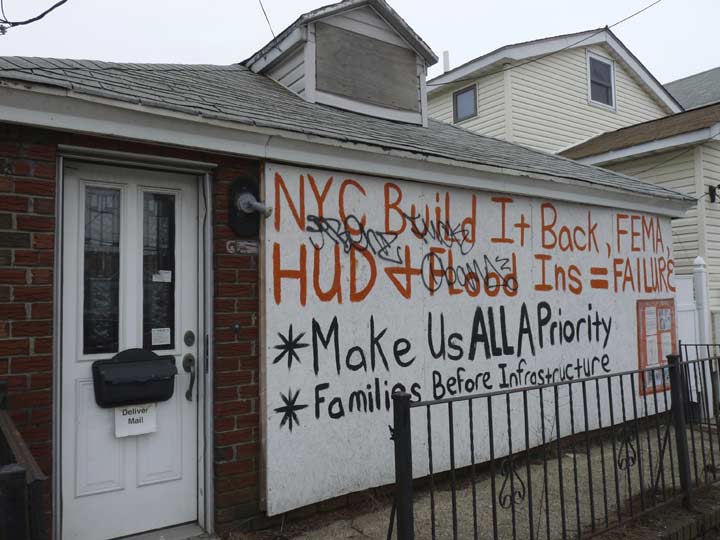
Returning to Cross Bay Boulevard, the notations on the dwelling reflect a seeming tardiness by the authorities in restorations following Hurricane Sandy in October 2012.
The roads west of Cross Bay Boulevard peter out at the water’s edge, allowing superb views of Jamaica Bay, its marshes, and Manhattan and Brooklyn beyond. At the end of 14th Road, we happened upon Dan Mundy Senior, the chief of Jamaica Bay Eco Watchers, a group dedicated to the preservation, protection, enhancement and restoration of the fragile ecosystem of Jamaica Bay. Dan appears in this new film that discusses the ongoing restoration of the bay and the wildlife that inhabits it.
Meanwhile, the Jamaica Bay Wildlife Refuge just north of the town of Broad Channel offers one of the very best opportunities to observe migrating birds, including some rare ones like the piping plover; according to the Brooklyn Bird Club, birds that frequent the area surrounding the over two miles of trails include the yellowthroat and redstart warblers, osprey (a small eagle that catches fish), oystercatchers and willets. Herons, egrets, ibis and barn owls make themselves less obvious, though sharp vision and a pair of binoculars and perhaps a spotting scope will see you through. The trails themselves offer a wide, flat expanse with views of Coney Island to the west and midtown Manhattan to the northwest. The Refuge seems to be a world away from bustling New York City, yet it is just a short ride away.
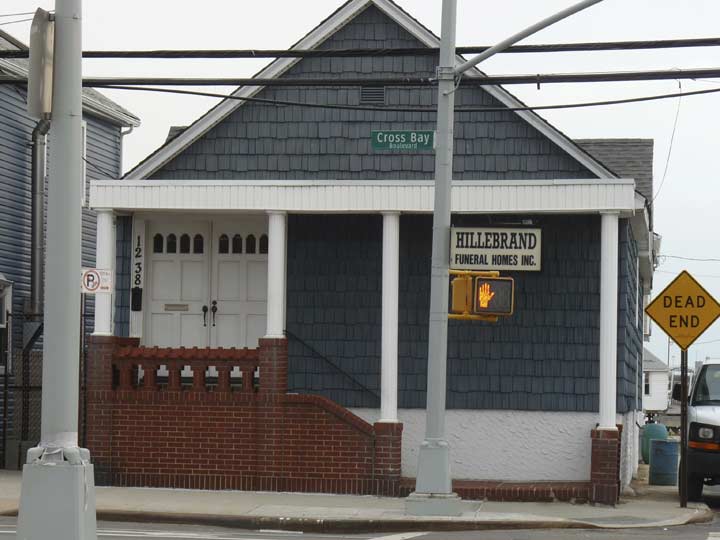
Leaving Broad Channel for now with a demonstration that at least some of its needs are immediately taken care of. And never was there a more appropriate place fpor a dead end sign…
3/27/16

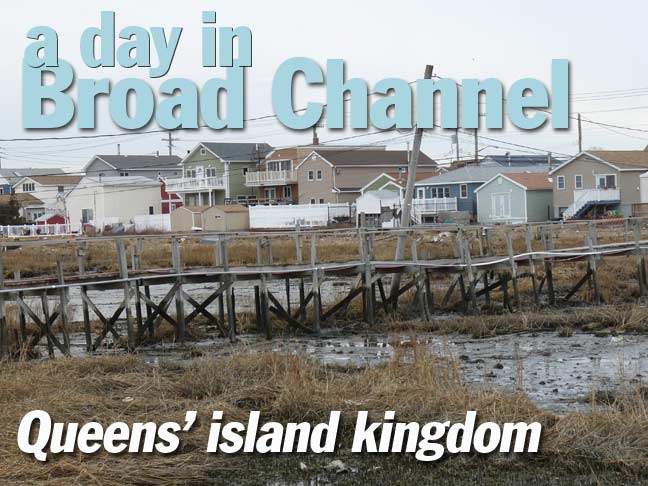
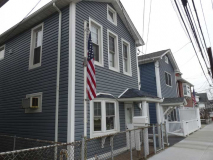
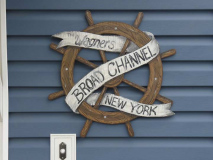
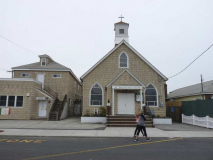
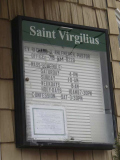
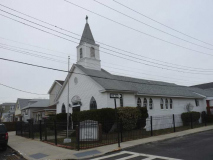
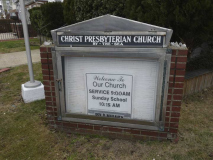
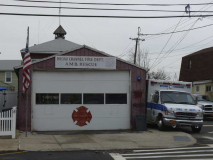
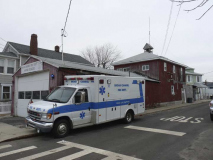
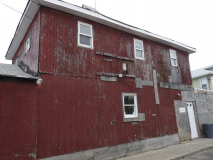
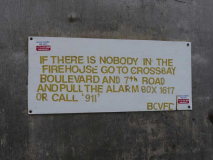
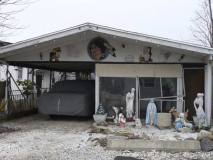
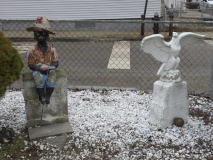
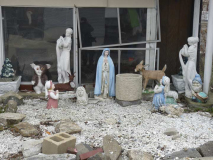
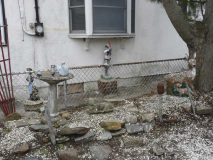
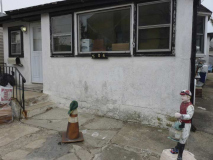
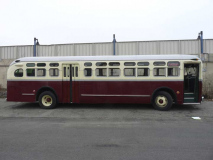
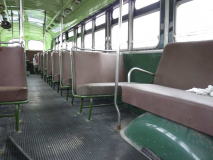

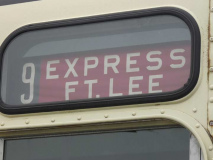
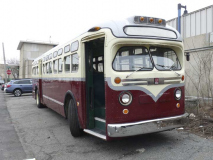
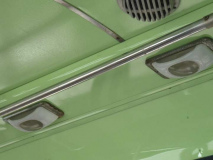
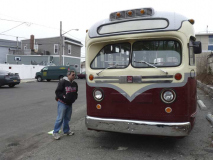
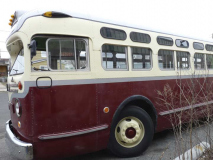
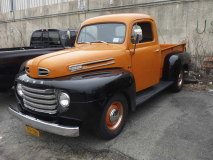
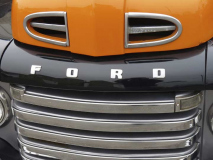
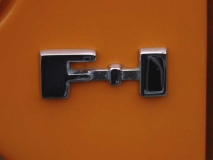
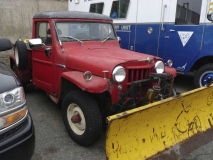
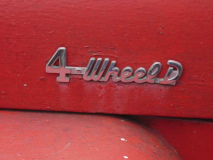
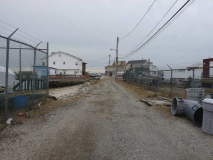

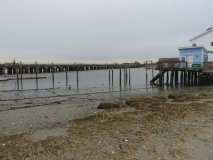
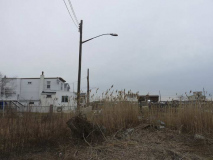

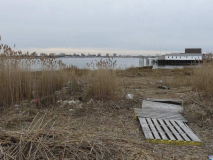
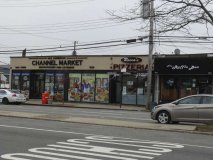
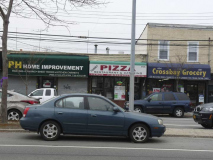
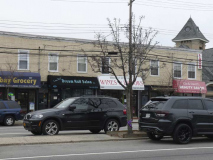
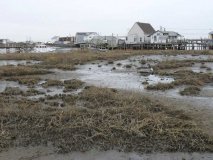
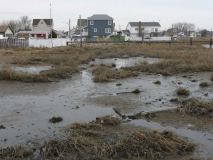
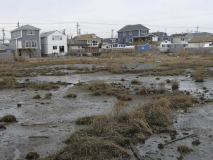
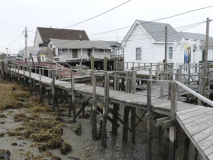
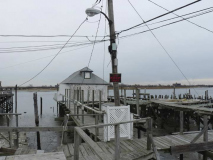
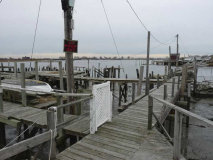
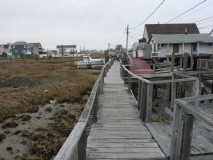
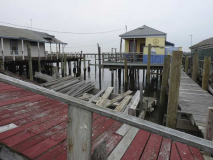
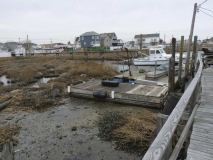
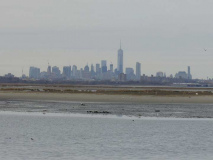
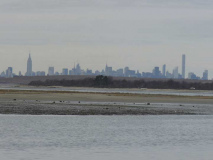
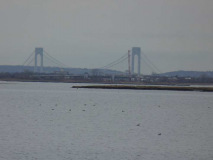
29 comments
Thank you for this detailed post about Broad Channel. My mother was from “old” Howard Beach and she and her 9 siblings had many friends and other family members who lived in Broad Channel. Before moving to Long Island, we lived in Ozone Park. My dad was a cop in Rockaway Beach. I cannot count the times in my life that I’ve driven Crossbay Blvd. to admire the small expanse of BC. It’s beautiful and your pics just bring back a ton of memories. Thank you.
Catherine,
By Old Howard Beach, do you mean the section just West of Hawtree Creek/Basin? My dad grew up on the other side, in Ramblersville, (but he usually referred to it fondly as Howard Beach), & coincidentally, my Grandfather moved the family to Ozone Park (looks like 113th St is now called South Ozone Park), & then my Dad (way) out to Wading River, Long Island.
I only lived my 1st year in Ozone Park, so most of my memories were from the many trips back in until my G-Father also moved out to Wading River in the mid-sixties.
It’s like I can (almost) feel the weight of history looking at some of these pics, & historic info . . . & Google Maps doesn’t suck, either.
Very nice, interesting looks back with Forgotten NY, Kevin. Some of us didn’t/don’t have as many memories of the city as they’d like. I wish I had talked more about their old days with my Dad, & Granddad, & relatives while they were still with us. I guess that’s part of the reason I find NYC history fascinating.
Thanks
There are maps from the 1950s showing Broad Channel’s streets as part of the general Queens numbering system. With avenues running from 188th Avenue to 208th Avenue. I wonder if they were ever marked that way.
I am not certain if “the only inhabited island” in Jamaica bay is correct. The tiny Nassau town of Meadowmere Park is located on part of an island at the Head of the Bay. It is connected to the mainland by East Street – as well as a little foot bridge to the even smaller community of Meadowmere, Queens.
Who remembers Weiss Restaurant?
http://www.qchron.com/qboro/i_have_often_walked/weiss-restaurant-broad-channel/article_74b4cea4-ef15-52b2-929f-d5c27fcfac7d.html
I remember Weiss. When I was a kid the family used to eat there after spending the day at Riis Park.
I remember Weiss Restaurant. My family spent time in Broad Channel at Egg Harbor Yacht Club on Shad Creek Road in the 1950s and 60s. We kids could spend the day out on Jamaica Bay in a small boat with a tiny outboard motor. We would wander the bay and land on island beaches, Occasionally we would fish or crab. We weren’t expected back until dinner time. On special occasions, our parents or another adult would take us to Weiss before heading home to Glendale. Weiss was fairly elegant- what we then called a restaurant as opposed to a less formal “diner.” I loved it. Will Werner, Portland Oregon
I grew up in Ozone Park and went to Bishop Loughlin High School in Brooklyn, via the A train. My friend and classmate Tom Kronenberger lived in Broad Channel, also traveling to Loughlin on the A train. If I remember correctly Tom’s father was a homicide detective for the NYPD. Your pictures brought back a lot of memories.
I also attended Bishop Loughlin and The Kronenbergers were my cousins.I lived across the street from them on Crossbay Blvd
The buildings in the background of the A train are actually Dayton Towers. Dayton Towers is a middle class Mitchell-Lama complex made up of 1751 apartments. It is spread over the peninsula from 74 street to 105 street. There is a 7 year wait to get into the buildings.
I don’t think coming on a wintry overcast day and writing and photographing does the place justice. The “Dead End” part is just snarky. The town has a hometown feel, almost no crime, a good public school, cool breezes. It’s a mini shangri-la. Rockefeller Center is an hour away. I’ll take “Mayberry NYC” over what Bay Ridge has become any day.
Great piece – but from the title, assumed it was about the founding of the Lifetime Network!
Har de har har
I went to Broad Channel Day Camp in the late 70s. The camp was there until the mid 80s. It is now part of the park that is right under the Addabbo bridge. I remember when the bus would make an immediate left turn into the camp after getting off on the bridge from the Rockaways.
The subway bridge in the photo is South Channel Bridge, between Broad Channel and the Rockaway Peninsula. Another bridge on the trestle between Broad Channel and Howard Beach is logically enough called North Channel Bridge.
My family lived in Broad Channel til around 1958. We lived on east 9th my Grandmother on Shad Creek( she was there til the late 60’s, moving to an apartment in Far Rockaway after her youngest child was married) I remember when the train station opened, best place ( only place lol)to roller skate. My parents, moved us and a great aunt to a two family home in South Ozone Park around 1958..thanks for this article
I spent a lot of time as a kid in Broad Channel. My dad Albert Werner was a club member of Egg Harbor Yacht Club, which was located in Broad Channel on Shad Creek Road west of Cross Bay Boulevard. The club was founded around 1908. He joined around 1932. The club members were all men. There were about 30 or 40. (I have my dad’s records somewhere from his role as treasurer.) The building had three floors. The upper two floors were dormitories for men. During the Depression, some men lived there year round. Lodging was free for members. There was no heat but there was a kitchen with kerosene cooking stoves.
Wives, girlfriends, and kids were all welcome. We kids had great time on many Saturdays or Sundays in the 1950s and 60s. We would cruise around the bay all day in a small boat with a 5-horsepower outboard, stopping at “sand bars” for nice swimming beaches. The only requirements were that we had to know how to swim and row, and return by a certain hour. On rainy days we could join the adults in games of Michigan Rummy. In the evenings, there were dinners and dances. There was usually someone who played the piano.The clubhouse had a small bar with brass step foot step and a tin beer tap. Sometimes we would stop at Weiss’ restaurant before heading home to Glendale, about 8 miles away.
The club built a “runway” from the building to a floating dock about 75 feet from the shore. Small rowboats were tied up along the runway. Larger “cabin cruisers” were moored in the channel. A rowboat would be used to bring a cabin cruiser to the float to pick up passengers and gear. The club had “marine railway” tracks and car with electric winch that was used to launch boats stored in the yard behind the building. We all watched tides to knew when to launch a boat, go crabbing, and not get stranded in shallow water!
My dad worked as a steam engineer at Atlas Terminal in Glendale. One of his co-worker built a 44-foot deep-sea” fishing boat “Ro-Ma-Fran” and docked it at Howard Beach. I loved taking all-day trips on that boat. We went miles from the bay and often out of sight of land. All for now. Will Werner, Wilsonville, Oregon.
I remember Weiss’! I grew up on 15th Road of “the Channel” in the 1950’s; it was a wonderful place to live! That pharmacy was O’Sullivan’s then, I think. I attended St. Virgilius school, & spent my free time playing with friends By & Richard “down the end” on “the rocks,” which served to hold back the water at the end of all those dead end streets. Can’t believe Hillebrand’s is still there; we buried my great grandparents from there! The Channel was a wonderful, tight knit community, & I still miss it!
Any info on the Stickley family?
My parents grew up on Broad Channel and I was born there at the house on E. 9th Road. My father, Smitty, only had to walk to work across the street. When he got older he was the ‘oil delivery guy’ and after WWII, he was the Silvercup bread fella. Good times and wonderful memories!!
I moved to the Rockaways in the mid 1970’s an always loved driving along Cross Bay Blvd through Broad Channel to the Cross Bay Bridge. The most scienic, natural and beauteous stretch left – and you’re still in NYC!
My grandparents Louise and Stanley mink lived on Noel road.my cousins the helms lived across the street. I had my aunt Judy and uncle Tommy mink lived next to the funeral home for years.I was born and lived in BC till our family the Dobbin moved to long island.BC still has my cousin’s Freddie and John Schmidt there.lots of love and memories for BC
I remember great times as a kid in Broad channel. My Grand father belonged to a club there called the packard athletic club. seemed like every nite was a pot luck dinner . I would go over to Henny’s and get a couple of quarts of killies and a row boat then crab all day . I like d going under the sunporch in the boat to catch Blue Claw crab off the pilings Thought it was on shad creek rd but a long time ago and now not as sure, they built a school across the road in the 50;s
I posted above in 2016 about Egg Harbor Yacht Club. Does anyone else remember this club on Shad Creek Road? So much life happened there- parties, family gatherings, boating, fishing over perhaps 60 years. My dad Albert Werner joined around 1932 18 years before I was born. We went many times as a family in the 1950s and 60s. I will dig out names of members from an old file and post them later. For now, does anyone remember this club? Would love to hear from you. Best, Will Werner, Wilsonville, Oregon
My grandparents, my mom and uncles lived on 16th road on Broad Channel. In the
1960s and 1970s my dad owned the Audrey Murphy bar and grill on Crossbay blvd.
It closed in 1973.
i believe as opposed to keep out you would have been welcomed by the homeowners on the boardwalk
Hung out in Broad Channel in the 1960 s. Had several HS friends. Then attended all the bar parties that raised money for the Labor Day Games. Fun times.
Thank you for your historical coverage of broad channel. My grandfather. William A Froeb was a very early resident of Broar Channel.He and my father William V Froeb were very early residents of Broad Channel. HE AND MY FATHER. WILLIAM V Froeb moved his house from sheepshead Bay to Broad channel in the twentys on abarge that they towed themselves. He was one of the rirst residents and put his house at the extreme end of the 18 th .He lived there. Summers only until he passed away at age 93. I believe the house is still there and is probably worth fomenting after the city gave the current residents title to there homes.
I drove a cab around Brooklyn and Queens back in the 1980s and it was interesting. I used to sit outside Shea Stadium and I’d wait for a customer. Big whoop. Well, the Mets take out the Dodgers and the fans start out, I mean the game JUST ended as I was listening to it on the radio. This beautiful woman jumps in my cab; name was Valerie. I’ll never forget her.
She says to me “Howard Beach” and I said “sure” and as I pulled out I got t-boned by Kevin McReynolds! What a woild!